Are you looking for a new guard dog but cannot decide on the Bullmastiff color you’d prefer? Look no further, as this article is for you.
Bullmastiff is one of the most popular dog breeds for those looking to get a watchdog but also a family pet.
While wary of strangers, they are extremely affectionate with family members, even young children, making them a suitable choice for most families.
Despite their popularity, most people know only the most common colors these pups come in. But did you know they are more colorful than many people might realize at first?
Without further ado, here are all the possible Bullmastiff colors and patterns:
Bullmastiff Color Overview
Before you learn about Bullmastiff colors, it’s important to understand a few things.
The appearance of all recognized breeds is determined by the breed standard set by a specific kennel club. In the US, the main kennel club is the American Kennel Club (AKC), and this is the club I’ll be referring to.
However, different parts of the world have different kennel clubs – such as the United Kennel Club (UKC) and the Federation Cynologique Internationale (FCI). Their standards might vary slightly from the AKC’s, so this is something to keep in mind.
Bullmastiffs are one of the Molosser breeds, such as Boxers, Boerboels, Dogo Argentino, and many others.
As a result, you can see many traits they share with these breeds – which include large, muscular bodies, long legs, droopy faces, and short, floppy ears that are sometimes cropped for various reasons.
This also means they come in most of the distinct colors other Molosser dogs share. Just look at Boxer colors and see the similarities!
But if you want to double-check (or just look at all the cute pictures) – keep on reading!
1. Red Bullmastiff
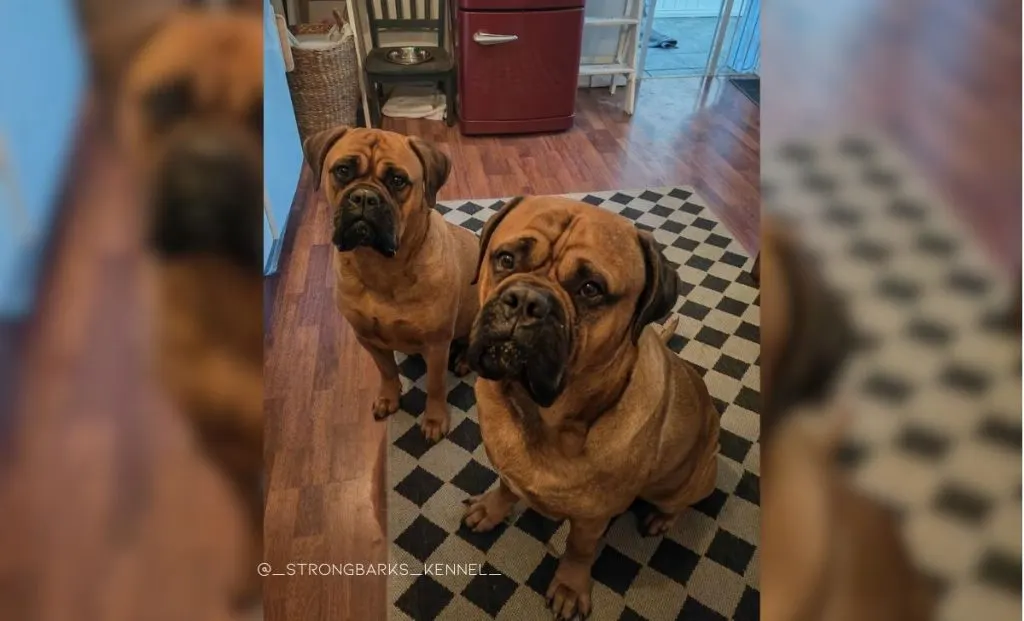
Red Bullmastiff is one of the most common Bullmastiff colors, and a large number of Bullmastiffs you’ll find are in this color.
The exact shade varies from deep red, which resembles mahogany, to a light ginger color. However, all will come in a rich shade, which helps differentiate them from fawn shades, which are also very common.
All red Bullmastiffs have a black mask, black noses, and dark eyes – although sometimes hazel eyes are also possible, but they are considered undesirable.
Also, most of these pups will have a small white marking on their chest, but this isn’t a necessity.
2. Fawn Bullmastiff

Fawn is almost just as popular as red when it comes to Bullmastiffs. Compared to the mighty red, fawn is much more gentle and calming, which is why many dog owners prefer it.
The fawn color can vary from light brown to reddish-brown, but it will always be duller than a red coat.
Fawn coats are rarely in a single hue. Instead, they are often a shade darker on their backs, and lighter on their tummies, inner legs, and chest.
Just as is the case with red ones, almost all fawn Bullmastiffs will have a black mask, black nose, and dark eyes.
White markings are quite rare on this base color, but not impossible.
3. Brindle Bullmastiff
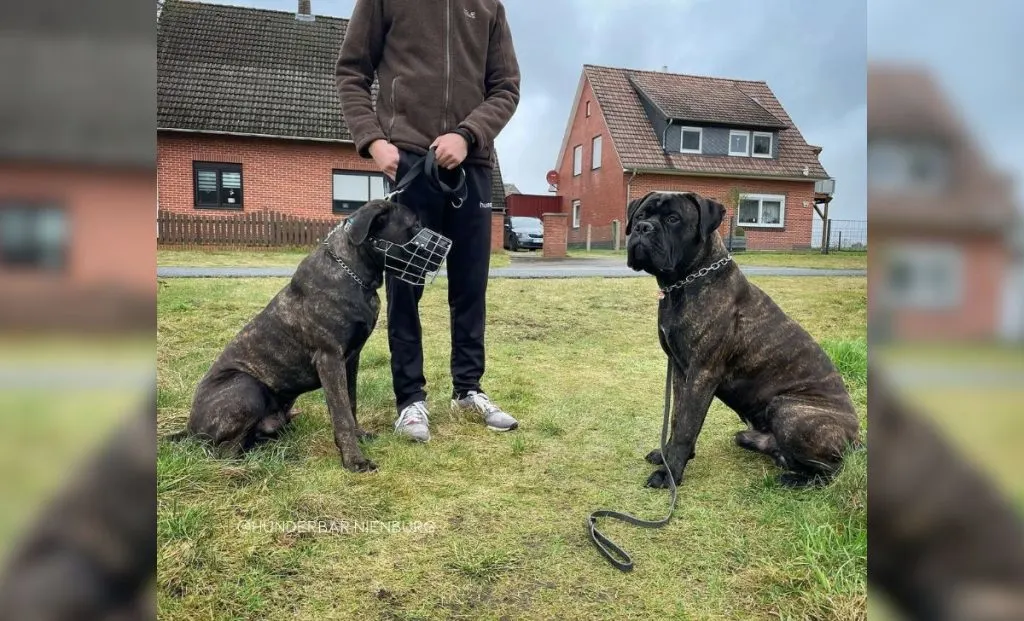
The brindle pattern is quite prominent on most Molosser breeds, and this includes Bullmastiffs.
This specific color is recognized by a base color intertwined with dark, sometimes even black stripes.
While black masks often occur, most of the time, they won’t cover a dog’s eyes, stopping at its muzzle. Their ears are often darker in color, as well.
White markings are possible on their chest and paws but are not mandatory. Also, their eyes, noses, and paw pads should be black.
4. Red Brindle Bullmastiff
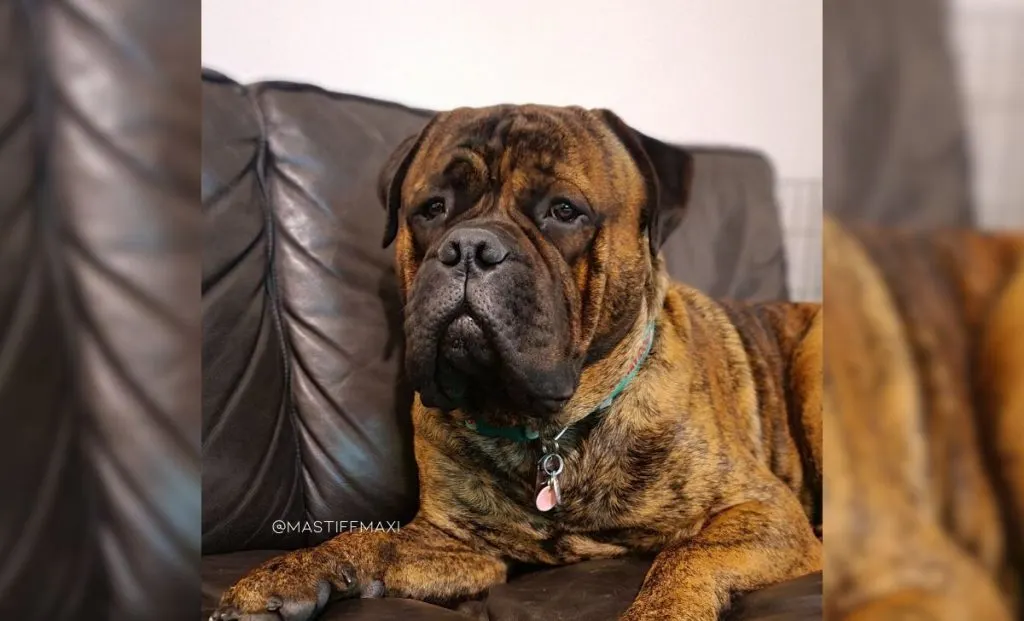
Red brindle Bullmastiffs are, essentially, brindle Bullmastiffs with a red base coat.
When combined with dark markings, you get a beautiful dog that will overshadow every other.
They, too, should have a black mask. Lighter markings also can occur but are considered a fault.
5. Red Fawn Bullmastiff

Red fawn Bullmastiffs are one of the most beautiful dogs you’ll see. Both red and fawn are gorgeous shades, so when they appear together on one coat, they give an amazing appearance that can hardly be matched.
These two colors don’t come together as parti markings or some other pattern. The hairs are simply entwined, producing a unique and gorgeous red fawn coloration.
You might even think these are sable dogs, by how their coats might appear to have a red overlay.
The red intensity will typically be quite low, making this shade somewhat challenging to differentiate from fawn.
I believe by now I don’t have to mention that this color, too, will come combined with a black muzzle.
6. Red Fawn Brindle Bullmastiff
Red fawn brindle Bullmastiffs are – you’ve guessed it – red fawn Bullmastiffs with the brindle pattern.
This specific coat color might resemble a tiger’s coat the most, which is why these dogs are so sought-after.
However, they are also very rare, so don’t be surprised if you don’t find many breeders selling them.
7. Black Bullmastiff
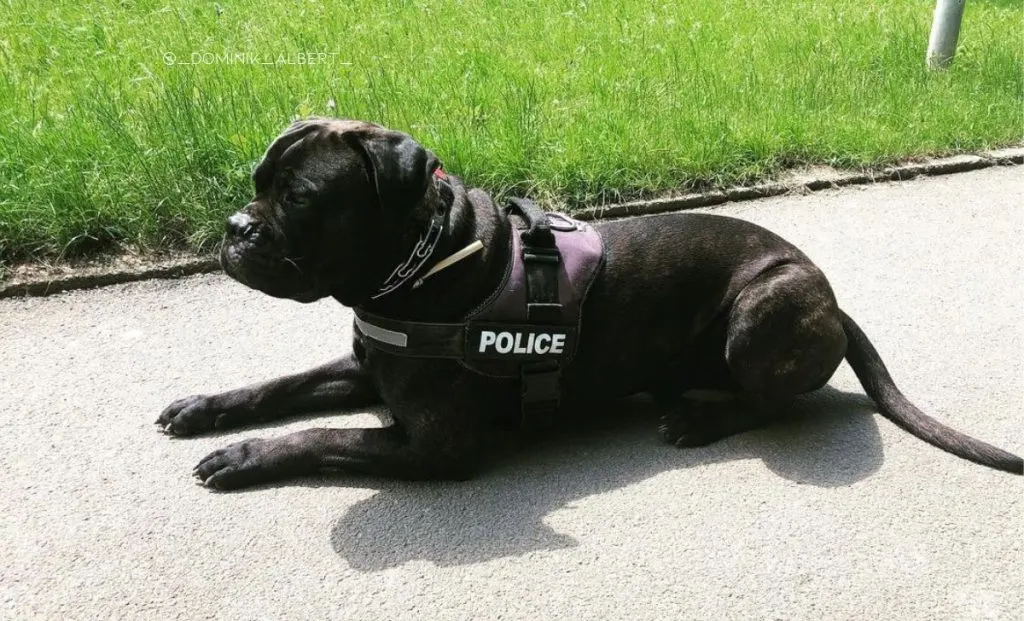
In recent years, pictures of black Bullmastiffs with striking yellow eyes have surfaced online, making everyone wonder where they can get such a dog.
I have to disappoint you – there is no such thing as a purebred black Bullmastiff. Most black Bullmastiffs you see are actually dogs that come in dark brindle – so dark, in fact, that they appear black at first glance.
If you happen to see a Bullmastiff that is indeed black, rest assured that it is a crossbreed – most likely with a Cane Corso or some similar breed.
The gene for a solid black coat simply doesn’t come in the Bullmastiff breed.
In the case of dark brindle Bullmastiffs, some white markings on the chest are expected, and the majority of dogs in this color have them.
Just keep in mind that this color isn’t considered desirable, although some breeders love breeding it for its uniqueness and beauty.
8. Merle Bullmastiff
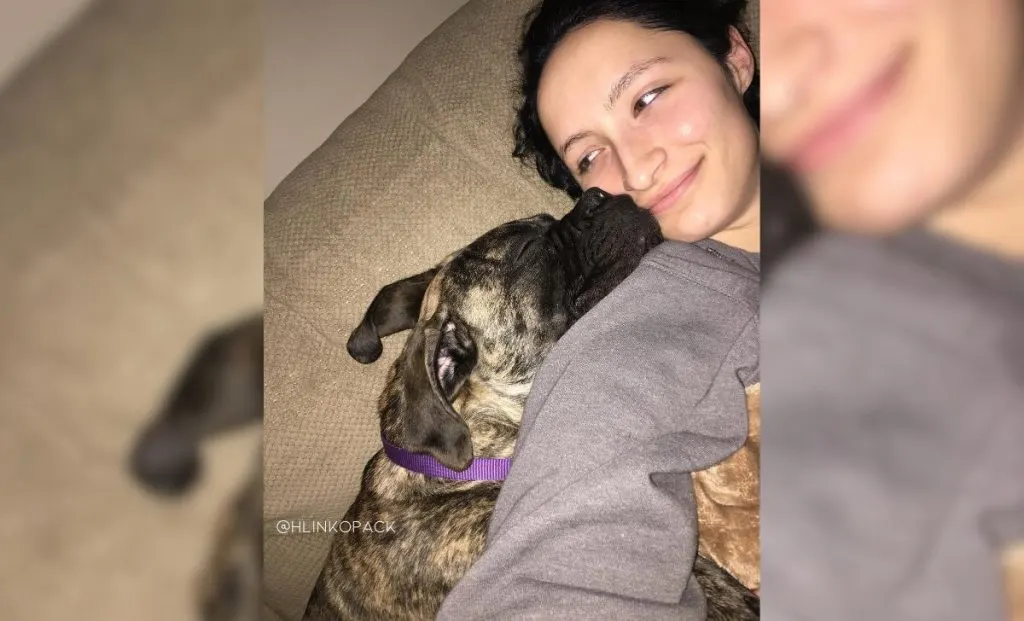
You might’ve also heard about merle Bullmastiff, a rare tri-color pattern characterized by colors that seem splattered one over another. Most of the time, these colors are white, blue, and black, with blue being the predominant color.
Merle dogs can also have blue eyes or heterochromia (odd-colored eyes), and their noses can come in a butterfly pattern.
However, merle is yet another color that doesn’t naturally occur in Bullmastiffs. It is the product of crossbreeding with some other dog – usually a Bulldog breed.
There is another reason why you should avoid merle Bullmastiffs altogether, and that is because the merle gene is connected with numerous health issues, such as deafness.
The intentional breeding of merle dogs in most breeds is considered unethical, as it increases the chances of sick offspring. As a result, no reputable breeder will ever breed and sell merle Bullmastiffs.
So, no matter how beautiful this color is, it’s important to think about the well-being of your future pet. The health of the puppy should always come before its appearance.
9. White Bullmastiff
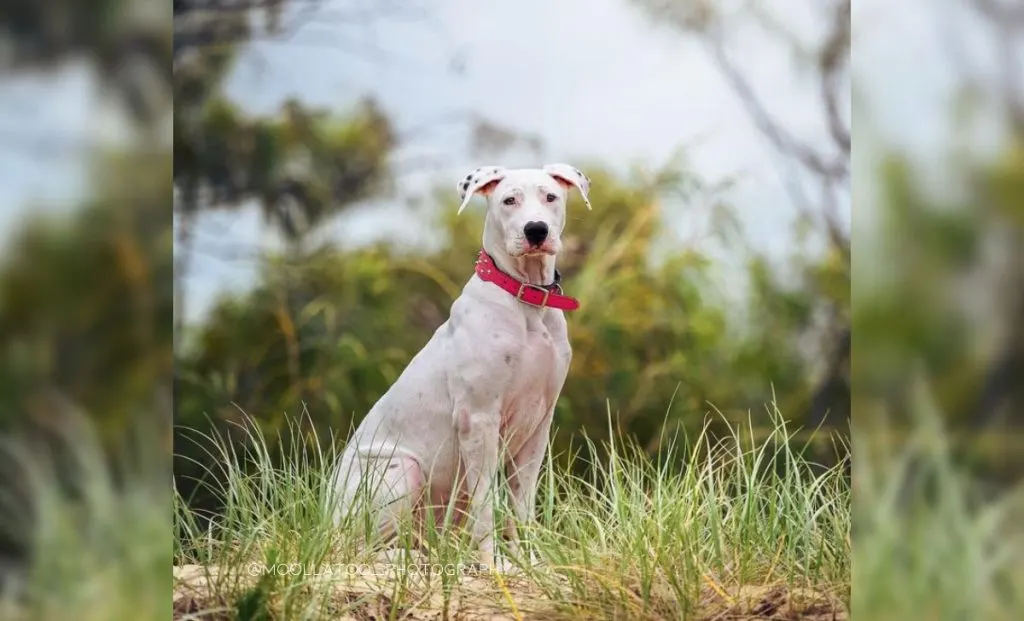
Lastly, you have Bullmastiffs with white coats. These dogs can come either in solid white or they’ll have the largest portion of their body in white.
Once again, white is not a color found in Bullmastiffs. These dogs are either crossbreeds, double merles, or canines with albinism.
When a dog has inherited a dominant merle gene from both of its parents, its coat will be white, and its eyes will be blue. However, these pups are prone to health issues, such as blindness, deafness, and bone and heart disorders.
In fact, the possibility of getting a double merle offspring is one of the main reasons why breeding merles is frowned upon.
On the other hand, albinism is a condition that strips the dog from any pigment. This includes its eye color and skin color.
Bullmastiffs with albinism have white coats, blue eyes with a reddish tint, pink noses, and pink skin.
Just like double merles, dogs with albinism usually also have various other health problems, which is why they shouldn’t be intentionally bred.
Either way, I wouldn’t recommend getting a white Bullmastiff, especially not if you plan on buying it from a breeder.
Possible Bullmastiff Markings
Next to base coat colors, Bullmastiffs also have four patterns that can be found in the breed.
Each of the markings I’ll mention can occur on any base coat color, giving us plenty of possibilities when it comes to the appearance of our favorite guard dog.
While all of these markings are recognized by the AKC, only one is actually desirable and considered a part of the breed standard.
Let’s see what these markings are:
1. Black Mask

Most importantly, we have a black mask – the only pattern that is allowed in the show ring and that is desirable for the breed.
A black mask spreads from the dog’s nose to its cheeks and over its eyes. Dogs with a black mask should also have black ears, giving their faces a quite recognizable appearance.
Some pups might have black masks with slightly different positions. For example, in brindle dogs, sometimes the mask won’t cover the dog’s eyes, stopping at its muzzle.
Most Bullmastiffs will have a black face mask, regardless of their face color. The exceptions are the three unrecognized colors I’ve mentioned – black, merle, and white.
White Bullmastiffs don’t have a black mask as their white coats are usually the result of loss of pigment. Merles don’t have this marking as the merle gene will dilute it. Finally, on black dogs the black mask simply isn’t visible.
Sometimes, purebred Bullmastiffs will be born without a face mask. This isn’t necessarily an indication that the puppy isn’t purebred. However, such a dog cannot participate in the show ring, as the black mask is considered mandatory for a ‘proper’ Bullmastiff.
2. Fawn Mask

Fawn mask is an extremely rare pattern that is almost impossible to find in this breed. However, it exists, and it’s recognized by the AKC – although it’s considered a flaw.
It’s challenging to give you a detailed description of this marking as it’s so rare. Still, your local breeder might have a pup with this exact appearance.
3. White Markings

Unlike fawn masks, white markings are quite common – although they, too, aren’t recognized by the AKC.
White markings usually occur on the dog’s chest, although they can be visible on the pup’s nose, stomach, and paws, as well.
Despite these dogs not being allowed in the show ring, many people just adore the appearance these dogs have, which is why they are so sought-after.
Luckily for you, most Bullmastiffs with these markings are more affordable than those without it, as they aren’t considered show-quality.
4. Black Mask, White Markings

This one is pretty straightforward, as it is simply a combination of a black mask and white markings.
Next to the face mask, this is the most common Bullmastiff pattern – considering how finding dogs with white markings but without black muzzles is extremely uncommon.
While possible on all base coats, it seems that the combination of a black mask and white markings is somewhat more common in brindle Bullmastiffs – although this might be simply due to the fact that the white color is more noticeable on darker coats.
Do Coat Colors Matter?
The dog’s coat color can influence a person’s choice to buy said pet. Should it be this way, or is this only a matter of appearance?
There are many prejudices about dogs that come in certain colors. For example, some people think that black dogs are aggressive, and that brown dogs are sickly.
While there are no truths to these claims, it is true that coat color can indicate a few things.
Firstly, if a dog comes in a color that isn’t recognized by any kennel club, chances are it is a mixed breed.
While there is nothing wrong with getting crossbreeds, you should always get a dog you’ve paid for, and a dog you’re prepared for. Crossbreeds might have some traits that are different from their purebred parents, so these dogs might not be what you want.
Also, as you’ve already read, some coat colors, such as merle or white, can be connected with a wide variety of health problems, so you should stay away from them.
Other than that, feel free to choose a dog that looks the way you want. The color itself won’t affect its behavior in any way.
All Bullmastiff colors make equally good working dogs and family pets, so go ahead and pick your favorite!
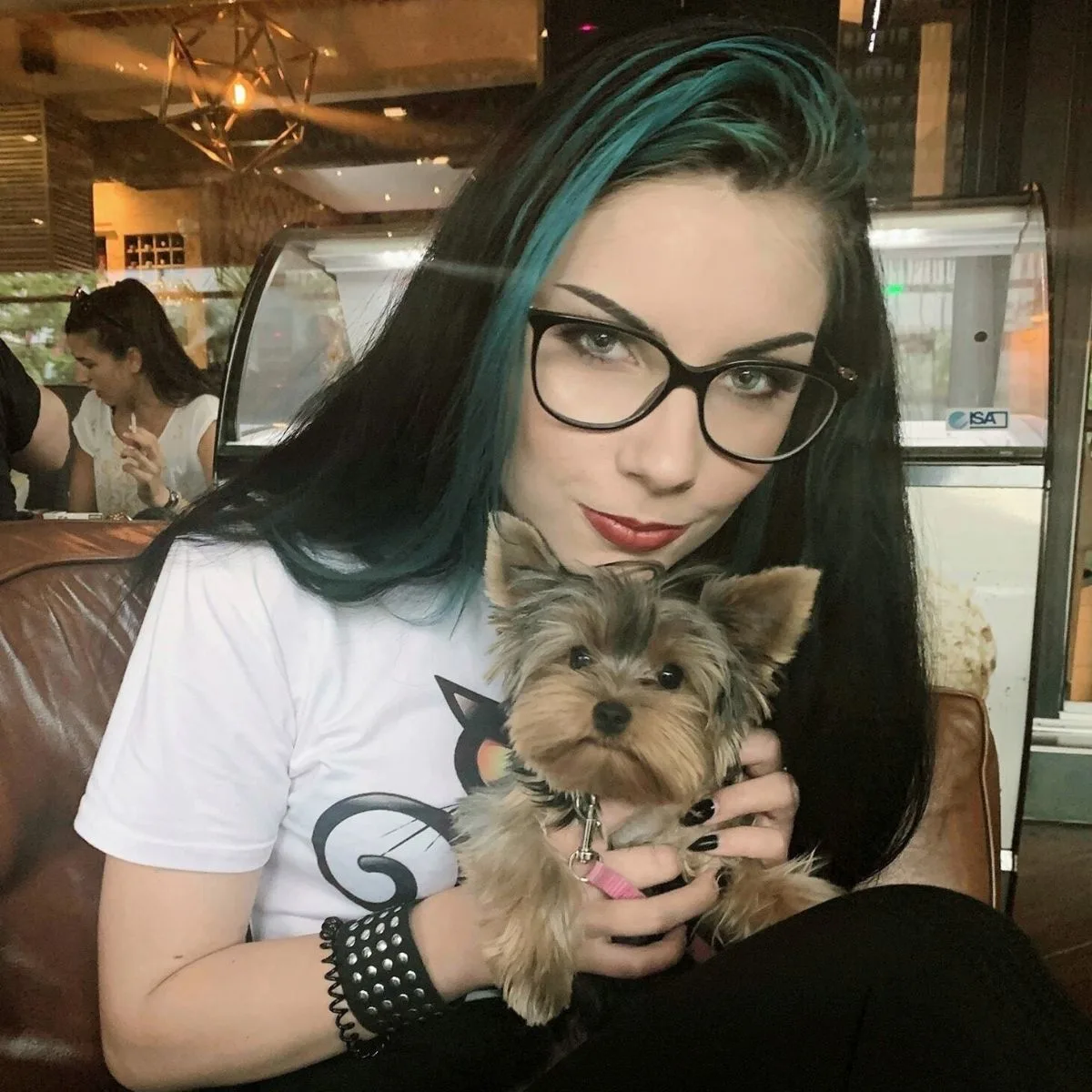
Vanja’s passion for writing started at an early age, which is why she pursued Journalism as her college degree. She can research any topic and find all the information before you bat an eye, which is a great thing for her job but a terrible one for her husband.
Even as a young child, she fell in love with everything fluffy – but dogs have a special place in her heart due to her childhood companion, a Corgie named Archie.
Motivated by her experiences and driven by a desire to give back to her four-legged companions, she spends her free time volunteering at a local dog shelter.
